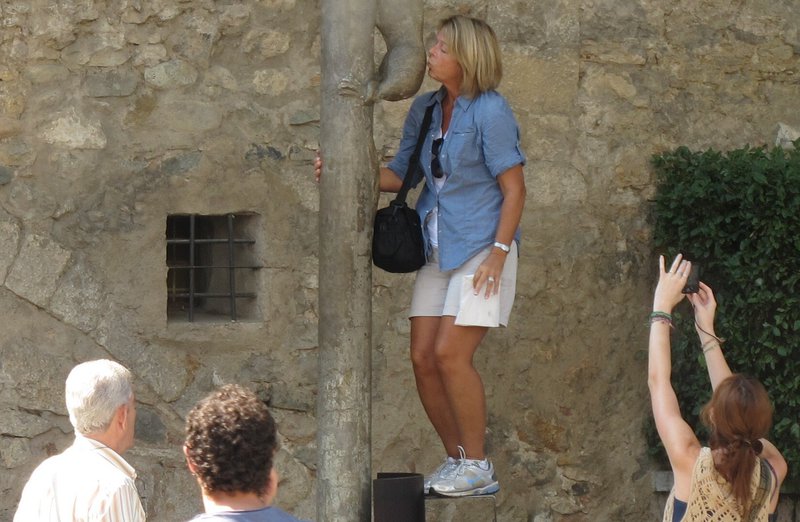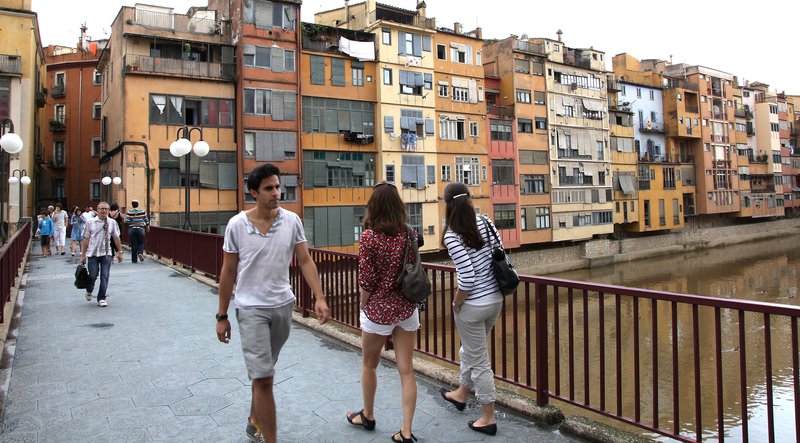Girona, a city for a trip into the past
With its four rivers and its dual city walls, its cobbled streets, historic buildings, monuments and artistic riches, the city of Girona is an excellent destination for a dive into the past.
Girona’s alleyways take the visitor back 2,000 years to the time of the Romans, who built the city’s first fortification in the 1st century BC. With its thick stone walls, the Roman fortress known as the Força Vella protected the city until the 10th century. A walk along the path atop the city’s later mediaeval walls reveals historical vestiges of that remote period of Roman rule.
In fact, it was the mediaeval period that saw the Roman walls extended to provide the city with the longest Carolingian wall in Europe. The city walls also serve as a pathway encircling the city and its towers provide fabulous views of the city and its surroundings.
Between the 11th and 15th centuries, Girona experienced great growth and new neighbourhoods sprang up within the mediaeval city walls . However, the most important of them was a real mediaeval gem: the best-preserved Jewish quarter in Europe. A maze of stone alleyways and courtyards in the heart of the city’s old town, the Call as it is known is testament to the importance of the Jewish community in Middle Ages Girona. In fact, the old town in general, with its steep, winding streets and stone archways is enough to seduce any visitor to the city. Yet Girona has even more to offer, as can be seen from the coloured facades of the houses on the banks of the River Onyar that have become an iconic symbol of the city. Some of the best spots to see the houses is from one of the bridges. All of the bridges have their own character but of particular interest is the Palanques Vermelles bridge, built by the Eiffel company.
Girona’s city centre is also a vibrant place, full of shops, bars and restaurants. For those who like cooking, a trip to the Lleó market is a must, where you’ll find fresh, local and seasonal produce. In fact, Girona has a strong relationship with food and the city has Michelin-starred restaurants that include El Celler de Can Roca, as well as hosting major food events, such as the Gastronomic Forum in February and Gastronomy Week in March.
out & about
The Lioness’s bottom
Over the ages Girona has collected plenty of legends, from the famous flies of the city’s patron saint, Sant Narcís, to the Cathedral’s stone witch gargoyle. However, one of the most relevant for new visitors to the city is the lioness statue known as the Lleona. Any new visitor to the city has the chance to declare him or herself a citizen of Girona, but only on the condition that they kiss the lioness’ bottom first.




